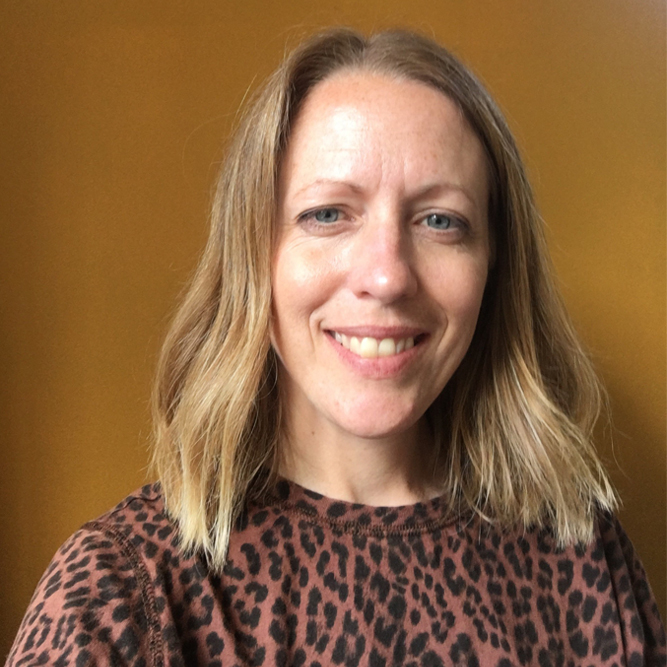March is Endometriosis Awareness Month and this year I’m reflecting on how we can support those with endometriosis and other invisible illnesses to thrive in work. With 54% of people with endometriosis reporting that it has reduced their income and 1 in 6 having to give up work[1], there is a genuine need for change.
At least 1.5 million (1 in 10) people assigned female at birth (menstruating people) have endometriosis in the UK. It’s a condition where tissues similar to those usually found in the uterus lining are found elsewhere in the body, such as in or on the ovaries, fallopian tubes, bowel or bladder. These tissues break down and bleed each month causing scar tissue and lesions which can lead to pain and inflammation.
There is currently no cure for endometriosis and limited understanding of its causes. On average, diagnosis takes 8 years in the UK and it can only be properly diagnosed via laparoscopic surgery. Each person’s experience is unique, but endometriosis is often characterised by:
- Chronic pain including severe period pain or flares that can prevent people from engaging in everyday activities including education, work, and socialising.
- Digestive issues and pelvic or abdominal inflammation.
- Chronic fatigue, low energy, and brain fog.
- Difficulty conceiving or infertility.
- Elevated stress levels, higher risk of anxiety, depression, and a sense of isolation.
Sadly, diagnosis times haven’t improved in recent years. The Royal College of Obstetrics & Gynaecologists report, Left for too long, found that wait times had increased by 60% from pre-pandemic levels (the largest increase across all NHS specialisms). Crucially, 77% of those surveyed said the long wait negatively impacted their ability to work.
It took over 11 years for my diagnosis in 2019, with several misdiagnoses along the way. I’ve since had two operations; the first to excise the endometriosis and the second a hysterectomy to remove my uterus and ovaries, given my symptoms didn’t improve. Endometriosis is a progressive condition and unfortunately, mine had become widespread given how long it was left untreated, leaving my symptoms severe and making my operations complex and lengthy.
I feel very fortunate that at Kada I’ve been able to speak openly about my experiences. Given there’s a strong sense of empathy and trust within the team, we’ve been able to work together to agree on a working pattern that allows me to continue to manage my ongoing symptoms.
Drawing on my experiences of navigating work with endometriosis, here are my three top tips for fellow endometriosis warriors and their employers. This isn’t an exhaustive list and I have a desk-based job, so for those in physically demanding jobs or where working from home isn’t a possibility, different approaches may be much more relevant.
- Reviewing work patterns: for example, starting later each day may help to manage fatigue and building in regular breaks for movement might help with pain management. Compressed hours, such as a 9-day fortnight, can ring-fence time for rest and fitting in medical appointments, though flexibility is needed here given we often have little say over when these can be scheduled. Hybrid working arrangements are a great consideration and could include working at home during the first days of menstruation. Part-time working may be a possibility but there are obvious financial implications here. If working hours are reduced, proactive workload management is vital, including managing the impacts on the wider team.
- Leading by example for empathy and trust: open communication is crucial for discussions about adjustments. Speaking about an invisible condition might leave people feeling vulnerable so managing from a position of empathy can provide a more trusting environment. This should facilitate more honest and open discussions about what might work best for the individual and employer.
- Shaping workplace culture: workplace cultures can either ease the way or impede the success of 1 and 2. This doesn’t mean that everyone needs to know the reasons for the adjustments, but it does mean promoting a culture that values difference and recognises the benefits of inclusive teams for productivity and creativity. Following different arrangements may lead to feelings of isolation so having allies in place that may not necessarily be a line manager might help too.
Overall, the key message is about keeping it individual based on each person’s experience of their condition. Symptoms can also change so it’s important to keep things under review.
Starting the conversation can be difficult and changes can take time to put in place but there are resources to help. Endometriosis UK has an endometriosis-friendly employer scheme with advice for individuals and employers. Involving occupational health can help to navigate options and HR processes. Although endometriosis is not classified as a disability, the Equality and Disability Act can help to initiate a discussion about adjustments where the individual’s experience aligns with the definition of a disability.
Since the pandemic, there has been a shift towards employers needing to consider different working models to support those with long Covid or other long-term conditions, and older workers (aged 50 and above) returning to the workforce. Inclusive approaches alongside skills and expertise in negotiation and HR policy will be priorities for all employers as the economy recovers. Hopefully, this will smooth the way for more open discussions in the workplace about other conditions like endometriosis.
As science and innovation are increasingly the focal point for economic growth, let’s ride this wave and call for more research into endometriosis. More innovative approaches could improve understanding of its causes, identify less invasive diagnostic methods and find more effective treatments that aren’t so reliant on pain relief medication. High-quality research into endometriosis is severely lacking but more effective diagnosis and treatments would ultimately improve the quality of life for those with endometriosis as well as contribute to economic inclusion and productivity which are all undeniably for the benefit of everyone.
[1] Occupational Health & Wellbeing Plus (2019). One in six endometriosis sufferers gives up work.
Written by Dr Laura Lane





